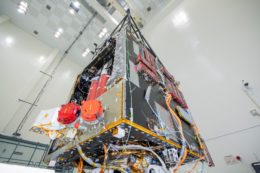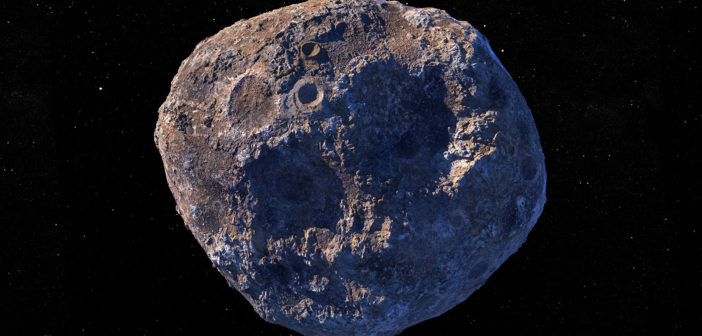Editor’s note: In these last two weeks of 2021, we’ll be looking at a few selections that we haven’t yet discussed on AAS Nova from among the most-downloaded papers published in AAS journals this year. The usual posting schedule will resume in January.
The Surface of (16) Psyche from Thermal Emission and Polarization Mapping
Published August 2021
Main takeaway:
A team led by Katherine de Kleer (California Institute of Technology) used the Atacama Large Millimeter/submillimeter Array (ALMA) to map the surface of asteroid (16) Psyche. These observations suggest that Psyche’s surface is no less than 20% metal, but the data lack the expected polarization signature of a metal-rich material.
Why it’s interesting:
Psyche has long been known to astronomers — the prefix “16” indicates that it was the sixteenth minor planet ever cataloged — but only in the past few decades has its intriguing nature been revealed; the extremely dense 220-km-wide asteroid is thought to be the core of a long-lost protoplanet. Although observations by de Kleer and collaborators indicate that Psyche’s surface is metal rich — likely in the form of iron oxides — the metal might be concentrated in dense inclusions that strongly scatter light waves. If this is a common trait among metal-rich asteroids, their emission may be less polarized than that of metal-poor asteroids, completely opposite what has been theorized.

This July 2021 photograph shows the Psyche spacecraft in a testing bay at the Jet Propulsion Laboratory. [NASA/JPL-Caltech]
Why you should be psyched:
Psyche will soon be visited by a NASA mission of the same name, which is scheduled to launch in August 2022. After launch we won’t have to wait too long — in an astronomical sense, anyway — for the spacecraft’s arrival; after a quick flyby of Mars, the spacecraft will reach its destination in 2026. The mission aims to discern the origin of this strange asteroid and give us our first look at a world made of metals rather than rock or ice.
Citation
Katherine de Kleer et al 2021 Planet. Sci. J. 2 149. doi:10.3847/PSJ/ac01ec

